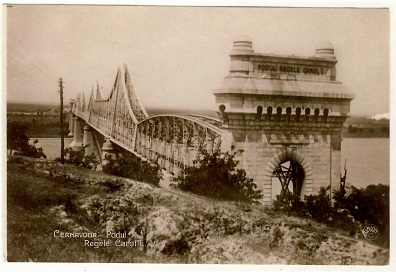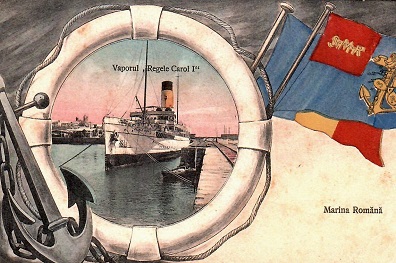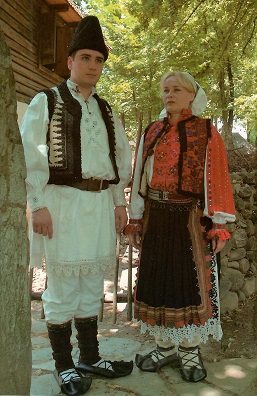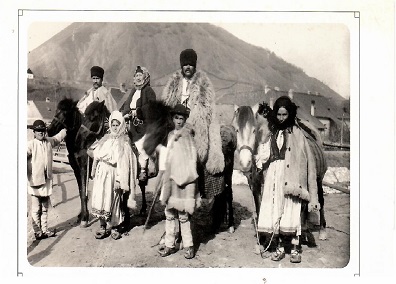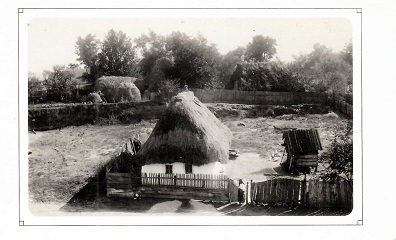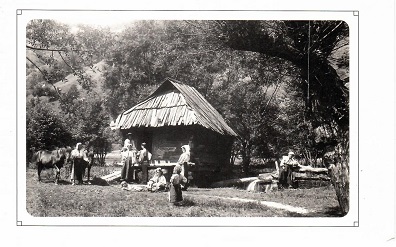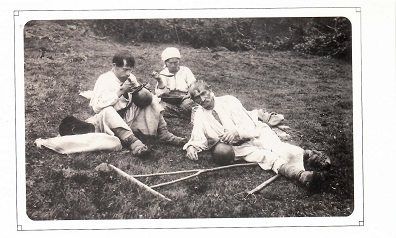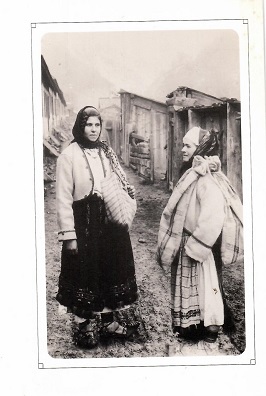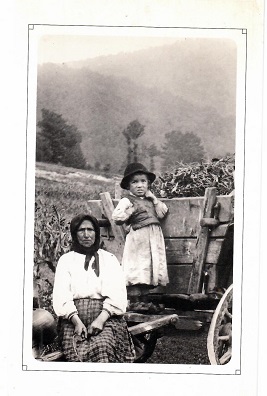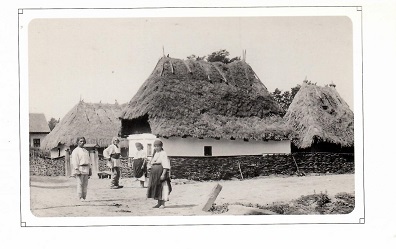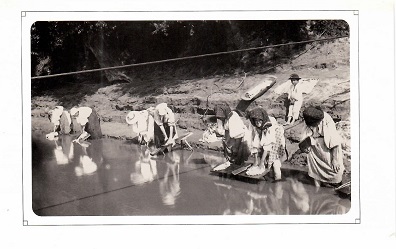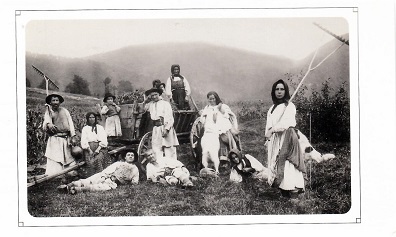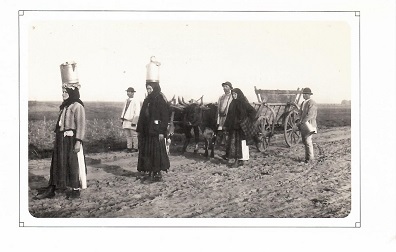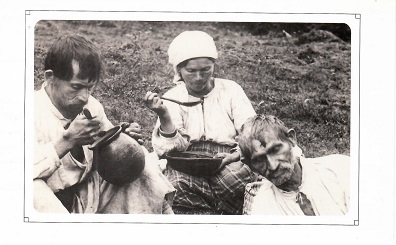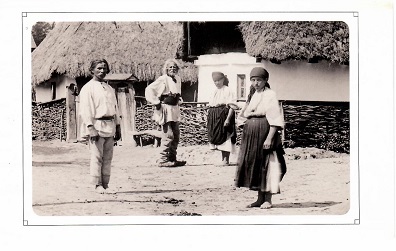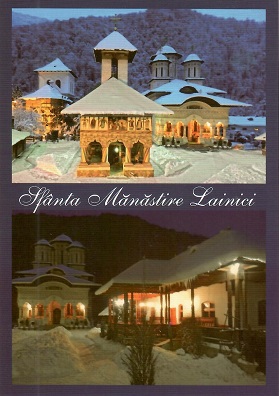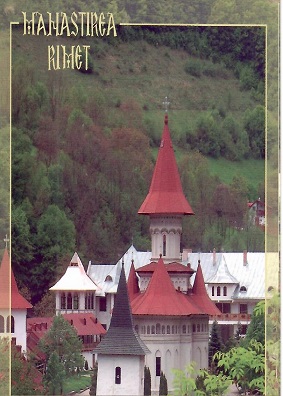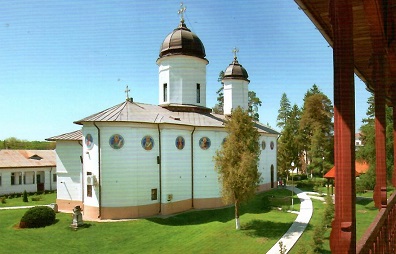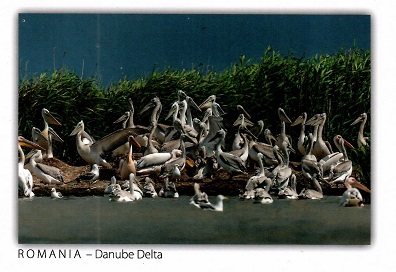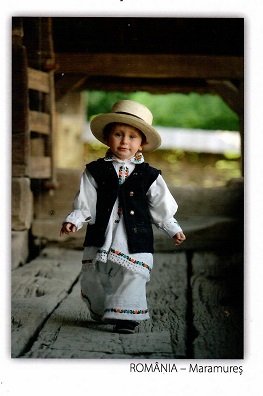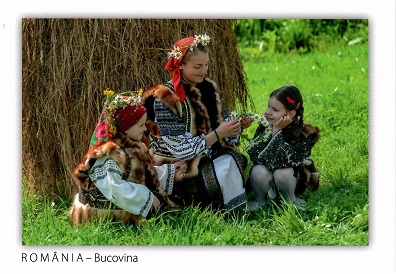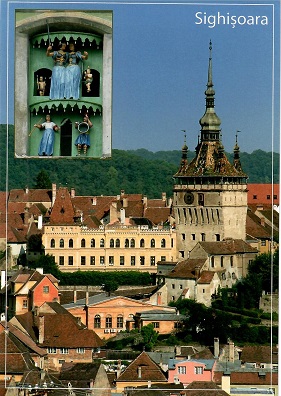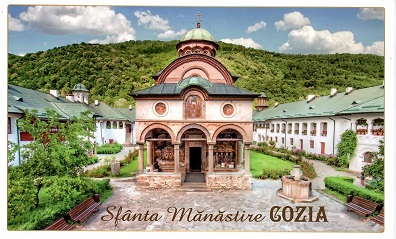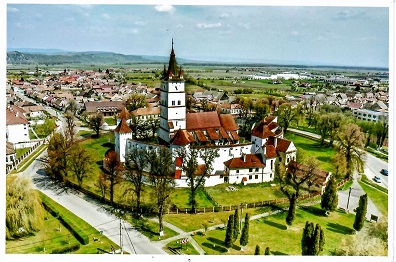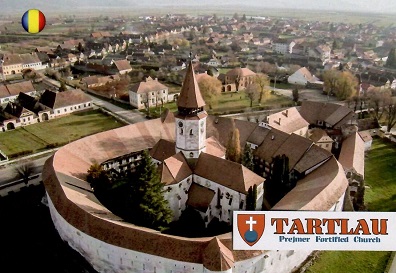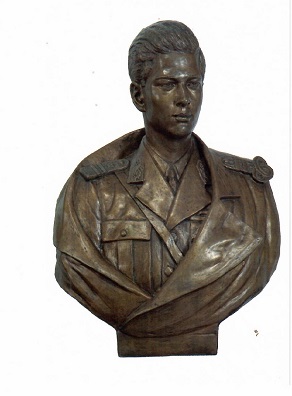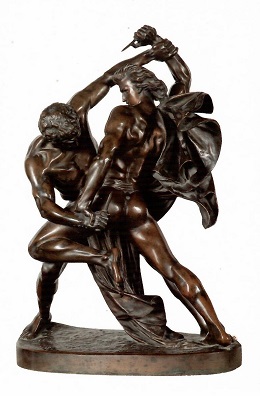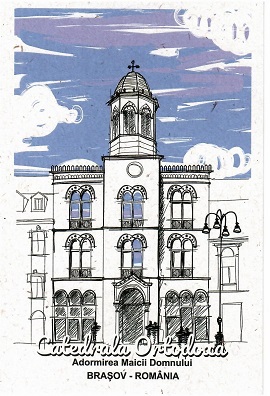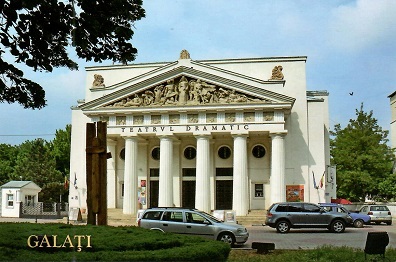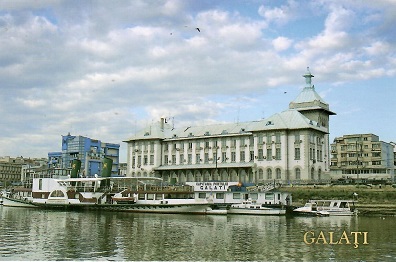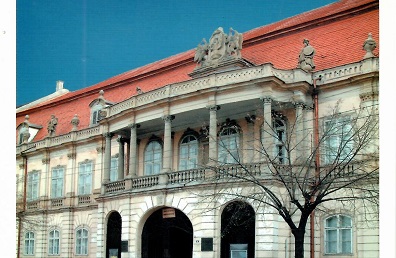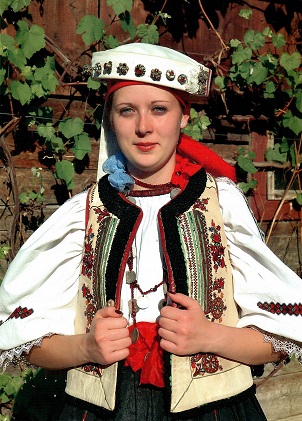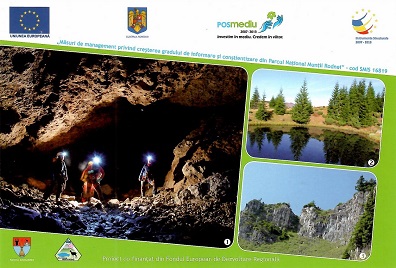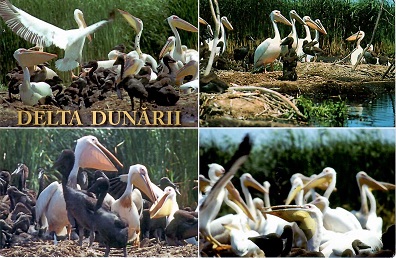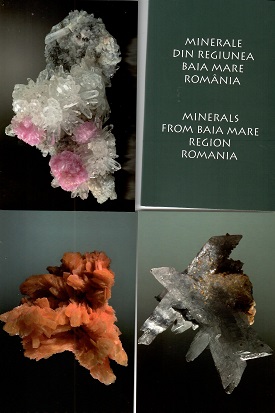-
Cernavoda, bridge
Unused, contemporary, reproduction card from ilovebucharest.org. Grade: 1
-
Marina Romana
Unused reproduction card, contemporary, from ilovebucharest.org. Grade: 1
-
Bucharest, National Village Museum, Padureni Costumes
Unused card from the same series as similar cards with similar historic costumes, this showing early 20th century clothing from Pădureni, a commune in Timiș County. Grade: 1
-
Leopold Adler AL459
With many thanks to our friend Tatiana for her help in sourcing from Muzeul Țăranului Român (National Museum of the Romanian Peasant) in Bucharest, we offer a series of unused cards featuring photographs by Leopold Adler. His Romanian entry in Wikipedia can be translated as: “Leopold Adler (Adler Lipót , b. , Prague – d., Brașov, Romania) was a photographer of Jewish origin who settled in Brașov and fixed figures from everyday life on film. He was one of the most prolific photographers of the early 20th century.” So this card begins the series, and each card has what appears to be a short serial number written in a designated place on the reverse. We put these numbers in our headers. None of the cards have specific captions other than that the photographs were taken in the town of Orăștie in 1900. Grades: 1
-
Leopold Adler AL797
See entry 20544096 for full description.
-
Leopold Adler AL804
See entry 20544096 for full description.
-
Leopold Adler AL448
See entry 20544096 for full description.
-
Leopold Adler AL449
See entry 20544096 for full description.
-
Leopold Adler AL489+
See entry 20544096 for full description.
-
Leopold Adler AL492
See entry 20544096 for full description.
-
Leopold Adler AL441
See entry 20544096 for full description.
-
Leopold Adler AL489
See entry 20544096 for full description.
-
Leopold Adler AL436
See entry 20544096 for full description.
-
Leopold Adler AL448+
See entry 20544096 for full description.
-
Leopold Adler 492+
See entry 20544096 for full description. This is the last in our series of Adler cards.
-
Lainici Monastery
A long story attaches to this monastery in Gorj County, too long for us to relate but it was built between 1812 and 1847. Unused postcard. Grade: 1
-
Rimet Monastery
One of the oldest monastic settlements in Transylvania, with Mihu frescoes dating as far back as 1377. Unused card. Grade: 1
-
Ţigăneşti Monastery
Romanian Orthodox, in Ciolpani commune of Ilfov county. Relatively new (1840), it was also an orphanage for girls until 1947. Unused card. Grade: 1
-
Danube Delta
Unused card. Grade: 1
-
Children in folk costume
Unused. Grade: 1
-
Maramureș, Child in folk costume
Looking much like an old man in a young body on this unused card. Grade: 1
-
Bucovina, Country scene
Unused contemporary card. Grade: 1
-
Bucharest, “Dimitrie Gusti” National Village Museum – Folk Events
In Romanian, Muzeul Național al Satului ‘Dimitrie Gusti’ and a panorama of folk events on this unused postcard. Grade: 1
-
Sighișoara, Clock Tower
Sighișoara is a city on the Târnava Mare River in Mureș County, in Transylvania. It is a popular tourist destination for its well-preserved walled old town, which is listed by UNESCO as a World Heritage Site, though this unused card does not mention that. Maybe in future editions? Grade: 1
-
Cozia Monastery
Cozia Monastery, erected close to Călimănești by Mircea the Elder in 1388 and housing his tomb, is one of the most valuable monuments of national medieval art and architecture in Romania. This 4-1/2″ x 7-1/4″ unused card shows the strikingly picturesque layout. Grade: 1
-
Hărman Fortified Church
Not postally used, the front of this card is fine and the reverse full of signatures and a sticker. Grade: 4
-
Tartlau, Fortified Church Prejmer
The Prejmer fortified church is a Lutheran fortified church in Prejmer, Brașov County, in the Transylvania region. The church was founded by the Germanic Teutonic Knights, and then was eventually taken over by the Transylvanian Saxon community. It’s a UNESCO World Heritage site, but without attribution on the unused card. Grade: 1
-
Bucharest Fountains
The unused card doesn’t say so, but we think this represents the Bucharest Fountains. If so, we can say that the artesian fountains of Unirii Square, built during the communist period, were restored and Bucharest can now boast the first smart fountains in Europe, designed 100% on a computer, with color, music, and 3D projections on the water. Bucharest holds the Guinness Record for the longest choreographed fountain system in the world: four “water screens” facing the four cardinal points were integrated into the central fountain and are designed to create a huge multimedia platform for videos and laser projections. Grade: 1
-
George Leonida
You see a small sculpture. We see Gheorghe (the actual spelling) as having been born in Galati in 1892 or 1893, and having debuted his sculptural works in 1915, at a national salon. After fighting in World War I, Leonida continued art studies in Italy for three years. Then in 1925, he moved to Paris, where Paul Landowski had just received the commission to collaborate with Heitor da Silva Costa in the conclusion of the architectural monument Christ the Redeemer in Rio de Janeiro. Leonida was hired by Landowski to sculpt the statue’s head. The work began in 1926, and was completed in 1931. He continued sculpting, and died in the spring of 1942, falling off the roof of his family home in Bucharest, while picking linden flowers. So this unassuming postcard is connected by only one degree of separation to one of the most famous statues in the world. Grade: 1
-
Duelul (Johan Molin)
The unused card somehow misleads us into thinking Molin was Romanian. Not so: Johan Peter Molin’s father was a baker who lived in Gothenburg, Sweden. In 1843, Molin travelled to Copenhagen to study; later, he lived in Paris and then Rome. From 1853 he taught at the Royal Swedish Academy of Fine Arts and two years later he was appointed professor in sculpting. In 1859 he completed the sculpture The Knife Wrestlers (“Bältespännarna”), which is what you see on this unused card. Copies of this work exist in Gothenburg, in Stockholm and in other Swedish cities. Maybe in Romania too, but we don’t know. Grade: 1
-
Brașov, Catedrala Ortodoxa Adormirea Maicii Domnului
Catedrala Ortodoxa Adormirea Maicii Domnului (a.k.a. Orthodox Church of the Assumption of the Virgin Mary) is on the north side of Piata Sfatului. The cathedral was built in 1896, when restrictions on Romanians entering Brașov citadel were lifted. It’s an unused postcard, and on the back, “I (heart) Transylvania”. Grade: 1
-
Galați, Teatrul Dramatic
Galați is in the historical region of Western Moldavia, in eastern Romania. It’s a port town on the Danube River and has been the only port for the most part of Moldavia’s existence. Unused card. Grade: 1
-
Galați, Administrative
Unused card. Grade: 1
-
Cluj-Napoca Art Museum (Muzeul de Artă Cluj-Napoca)
A fine art museum in a baroque building featuring works by major Romanian & Hungarian artists. Unused card. Grade: 1
-
Muzeul de Etnografie – BRAŞOV
Postcards this big (6″ x 8-1/4″) are eye-catching but impractical … anyway, this one is unused and in excellent condition, which we will work hard to preserve. Extensive captioning on the reverse is entirely in Romanian. Grade: 1
-
Cluj-Napoca Botanical Garden, multiple views
Nice, contemporary card. Grade: 1
-
Cluj-Napoca, Stefan Cel Mare Square
Aerial view on this unused card. Grade: 1
-
Parcul Național Munții Rodnei
Because everything on both sides of this unused card is only in Romanian, and because it’s quite a “busy” card, we will just venture that this is the national park (Parcul Național Munții Rodnei) and based on the identifying captions on the reverse, the largest view is a cave (Pesterea Izvorul Albastru al Izei, or Iza Blue Spring Cave) inside the park. You can let us know if we’re wrong. But overall this is a superb postcard. Grade: 1
-
Delta Dunării (Danube Delta)
The Danube Delta (Romanian: Delta Dunării) is the second largest river delta in Europe, after the Volga Delta. The greater part lies in Romania (Tulcea County), with a small part in Ukraine (Odessa Oblast). Its approximate surface area is 4,152 square kilometres (1,603 square miles),and happily this card — mailed from Tulcea in 2022 with three stamps and three postmarks — spares you those details and just shows what look like pelicans. Grade: 1
-
Minerals from Baia Mare Region (Set of 9)
This is a set of nine high-quality, unused cards of which our scan shows three along with the cardboard cover. Each card identifies its respective mineral (one example: Calcit, Calcopirita – Cavnic) but only in Romanian. Professor Google would certainly help out there. Grade: 1

